Manbhum Child Development & Rehabilitation Centre - Purulia
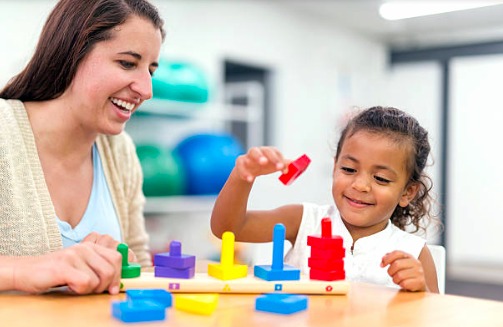
Our Services
Speech Therapy

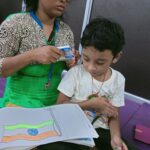

Speech-Language Therapy
Speech-language therapy addresses challenges with language and communication. It can help people with autism improve their verbal, nonverbal, and social communication. The overall goal is to help the person communicate in more useful and functional ways.
Common goals may include improving spoken language, learning nonverbal skills such as signs or gestures, or learning to communicate using an alternative method (such as pictures or technology).
Examples of Skills Addressed in Speech Therapy
- Strengthening the muscles in the mouth, jaw, and neck.
- Making clearer speech sounds.
- Matching emotions with the correct facial expression.
- Understanding body language.
- Responding to questions.
- Matching a picture with its meaning.
- Using a speech app on an iPad to produce the correct word.
- Modulating tone of voice.
Occupational Therapy
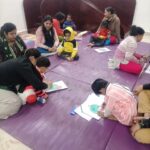
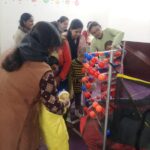

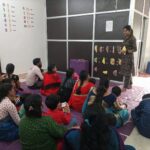
Occupational therapists work to promote, maintain, and develop the skills needed by students to be functional in a school setting and beyond. For example:
- self-care (e.g. dressing, eating a meal, managing toileting needs and managing personal hygiene)
- productivity (e.g. emotional regulation, levels of alertness, participation, hand writing and organisational skills)
- leisure (e.g. socialising with friends, belonging to a group, participating in hobbies/play and motor skills for PE).
- Every child will have a unique set of sensory needs and these needs will alter depending on mood, environment and therapeutic intervention.
For autistic children, an occupational therapist works to develop skills for handwriting, fine motor skills and daily living skills. However, the most essential role is also to assess and target the child’s sensory processing differences. This is beneficial to remove barriers to learning and help the students become calmer and more focused.
Cognitive Behavioural Therapy
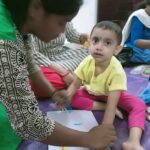

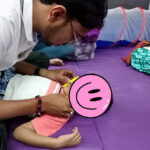

Cognitive behavioral therapy is used to treat a variety of conditions including autism spectrum disorder (ASD). The talking therapy can help patients manage their problems by helping them recognize and understand how their behaviors, thoughts, and emotions affect each other. Cognitive behavioral therapy (CBT) is a therapy that aims to get patients to recognize their own thoughts, expectations, and attitudes in order to change false and negative beliefs. It is one of the most common types of psychotherapy and consists of a combination of two approaches; cognitive and behavioral therapy.
How Does it Work?
Cognitive Behavioral Therapy (CBT) is based on behaviorism, which views human behavior as learned and modifiable. Its goal is to change thought patterns and behaviors that hinder positive outcomes. Unlike other therapies focusing on the past, CBT emphasizes the present, addressing current thoughts and beliefs.
Therapists help patients break down problems into smaller components—such as situations, thoughts, emotions, physical feelings, and actions—making connections clearer and easier to address.
Applyed Behavioral Analysis


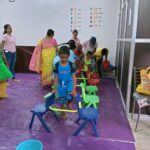
Applied Behavior Analysis (ABA) is a therapy based on the science of learning and behavior.
ABA therapy applies our understanding of how behavior works to real situations. The goal is to:
- Increase behaviors that are helpful
- Decrease behaviors that are harmful or affect learning
ABA therapy programs can help:
- Increase language and communication skills
- Improve attention, focus, social skills, memory, and academics
- Decrease problem behaviors
The methods of behavior analysis have been used and studied for decades. They have helped many kinds of learners gain different skills, such as:
- Healthier lifestyles
- Learning a new language
Group Therapy



Group therapy is mainly focused on teaching social and communication skills in children with autism. These groups are small groups consisting of 2or more kids, who will be directed by a trained therapist. We have to group the children according to there age, linguistic skill and social- emotions aspects.
How group therapy helps children with ASD
In a social group, children learn how to behave in a social situation. They can learn about the importance of friendship and companionship Improve their social participation.
Group therapy helps children develop social skills by teaching them appropriate behaviors, friendship, and cooperation. It reduces anxiety and depression, improves communication, and helps them understand social rules, humor, and emotions. Therapy fosters empathy, sharing, and participation in recreational activities, preparing them to follow rules and integrate into social systems. Activities are structured based on specific learning goals.
Special Education



Autistic children can benefit from specialised education settings to help them develop essential skills. Special education settings can include bespoke classrooms or resource bases. Special education methods are designed to support their unique needs and help them achieve their full potential. These methods are often individualised to meet the specific needs of each autistic student and involve a team of professionals, including special education teachers, behaviour therapists, and speech and language therapists.
- Specialised education settings benefit autistic children.
- These settings include bespoke classrooms or resource bases.
- Special education methods are tailored to support unique needs.
- Methods are individualised for each autistic student.
- A team of professionals collaborates, including:
- Special education teachers
- Behaviour therapists
- Speech and language therapists